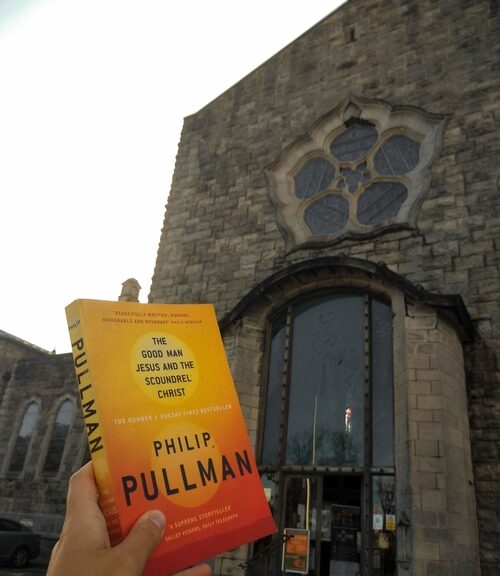

This shadow figure takes hold of Jesus's identity, recording and editing what he says and does, encouraged by a mysterious stranger who eventually prompts him to betray his brother to death and stage-manages the "resurrection" appearances by presenting "Christ" as Jesus risen from the dead. He is in love with miracles, with the dream of an unanswerable human authority sanctioned by God, with the mirage of a world forever safe from doubt and permeated by the benign if somewhat capricious presence of a God who reinforces his commands with – well, magic. The nickname conceals what is never said in the text: "Christ" is in fact Judas. Its premise is that Mary gave birth to twins: Jesus, an earthy, generous visionary, radical enough to create panic in conventional religious and political authority and "Christ" – a nickname for the weaker, self-righteous, fearful brother who shadows Jesus, trying to persuade him to accept a destiny he refuses. It is a fable through which Philip Pullman reflects on Jesus, on the tensions and contradictions of organised religion – and indeed on the nature of storytelling.Ī fable: it should be obvious from the early chapters that this is not meant to be a realistic narrative. This is not a speculation about the beginnings of Christianity, a claim to have uncovered the real, suppressed history of Jesus. It's worth remembering that emphatic statement as you read the book.

On the back of the book is printed in large capital letters, "THIS IS A STORY". The New Testament is far more alive to the dangers of religious authority than Philip Pullman allows, says Rowan Williams. Saturday 3rd April 2010 The Archbishop of Canterbury, Dr Rowan Williams, reviewed 'The Good Man Jesus and the Scoundrel Christ' by Philip Pullman for the Guardian newspaper.


 0 kommentar(er)
0 kommentar(er)
